KYPHOSIS:
INTRODUCTION OF KYPHOSIS :-
- kyphosis commonly known as hunchback, is described as an excessive antero-posterior curvature of the thoracic spine of greater than 40°.
- Normal kyphosis angles can vary between 20° and 40° in the younger public, however, in older population, the mean kyphosis angle is 48° to 50° in women and about 44° in men.
- Kyphosis can be called roundback or hunchback.
- Kyphosis can affect patients of all ages. The condition, however, is common during adolescence—a time of rapid bone growth.
- Kyphosis can vary in severity. In general, the greater the curve, the more serious the condition. Milder curves may cause mild back pain or no symptoms at all. More severe curves can cause significant spinal deformity and result in a visible hump on the patient’s back.
- It can result from degenerative disc disease; developmental abnormalities, most commonly Scheuermann’s disease; osteoporosis with compression fractures of the vertebra; multiple myeloma; or trauma.
ANATOMY OF SPINE :-
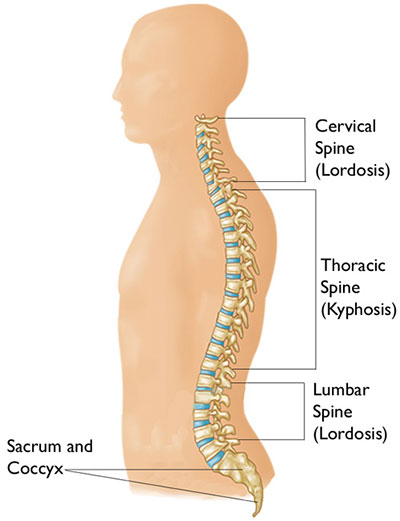
- In the womb and for a period of time following birth, a baby’s spine is shaped like the letter C. This curve is termed a primary curve, which is Kyphotic.
- During the time the baby is learning to lift his head and eventually walk, muscles develop. As muscular strength and ability is gained, the baby’s activity will shift body weight to the spine. Gradually secondary curves develop in the cervical and lumbar regions; Lordotic curves. These curves will continue to develop until growing stops.
- Spinal curves are either kyphotic or lordotic. In a normal spine there are four types of spinal curvatures important to balance, flexibility, and stress absorption and distribution.
CLASSIFICATION OF KYPHOSIS :
It can be classified into five categories:
- Scheuermann’s Disease:
The juvenile form of hyperkyphosis. Defined as a defect of the vertebral body growth plate at the cortical level, results in weakening the vertebral body and causing wedging. It stops at the end of growth, when the growth cartilage is no longer active.
2. Postural Kyphosis:
A most frequent form of kyphosis. It is a result of poor posture and weakened muscles and ligaments of the spine with no vertebrae deformities visible.
3. Congenital Kyphosis:
Bone defect detected at birth. Kyphosis angle will increase if not treated in time.
4. Age-related Hyper-kyphosis:
Kyphosis angle increases with age, resulting in age-related hyperkyphosis. Despite the fact that increased kyphosis is one of the typical results of osteoporosis, up to 70% of patients with age-related hyperkyphosis do not suffer from decreased bone mineral density.The exact prevalence of patients for non-osteoporotic hyperkyphosis is unknown, yet it is estimated that 10% to 45% of the people aged over 50 years are properly diagnosed. Genderwise, thoracic hyper-kyphosis increases to 50% in men and 65% in women over the age of 65 years.
5. Neurological Hyper-kyphosis:
Can be a result of the paralysis of abdominal and Thoracic And paraspinal muscles.
Which are the Causes of Kyphosis ?
Kyphosis occurs when the vertebrae in the upper back become more wedge shaped.
Abnormal vertebrae can be caused by:
Fractures.
Broken or crushed vertebrae (compression fractures) can result in curvature of the spine. Mild compression fractures often don’t produce noticeable signs or symptoms.
Osteoporosis.
This bone-thinning disorder can cause spinal curvature, especially if weakened vertebrae result in compression fractures. Osteoporosis is most common in older women and people who have taken corticosteroids for long periods of time.
Disk degeneration.
Soft, circular disks act as cushions between spinal vertebrae. With age, these disks dry out and shrink, which often worsens kyphosis.
Scheuermann’s disease.
Also called Scheuermann’s kyphosis, this disease typically begins during the growth spurt that occurs before puberty. Boys are affected more often than girls.
Birth defects.
Spinal bones that don’t develop properly before birth can cause kyphosis.
Syndromes.
Kyphosis in children can also be associated with certain syndromes, such as Ehlers-Danlos syndrome and Marfan syndrome.
Cancer and cancer treatments.
Cancer in the spine can weaken vertebrae and make them more prone to compression fractures, as can chemotherapy and radiation cancer treatments.
Which SYMPTOMS are seen in Kyphosis ?
If you have kyphosis, the easiest-to-recognize symptom is a rounded back. The extreme curve in your upper spine will cause you to hunch forward.
In addition to having a rounded back, you may have these other symptoms:
- Mild to severe back pain
- Back pain with movement
- Fatigue
- Tenderness and stiffness in the spine
- Forward posture of the head
- Chest pain or difficulty breathing (severe cases)
- Difference in shoulder height
- Tight hamstrings (muscles in the back of your thighs)
DIAGNOSIS:-
X-rays or CT scans.

X-rays can determine the degree of curvature and detect deformities of the vertebrae. A CT scan might be recommended if your doctor wants more-detailed images.
MRI.
These images can detect infection or a tumor in your spine.
Nerve tests.
If you are experiencing numbness or muscle weakness, your doctor may recommend tests to determine how well nerve impulses are traveling between your spinal cord and your extremities.
Bone density tests.
Low-density bone can worsen kyphosis.
EXAMINATION:-
Physical Exam:
During the physical exam, the doctor looks at your back and feels your spine. He or she will be feeling for abnormalities. Also, this part of the physical exam—called palpation—can reveal tender spinal muscles or tender hamstring muscles. The doctor will press on your muscles to see if there is any tenderness.
Kyphosis is best seen from the side, both standing straight and bending forward.
The doctor may do an Adam’s Forward Bending Test: in that, you bend forward at the waist. The doctor will look for a rounded curve (more indicative of postural kyphosis) or a more angular curve.
The angular curve can be called a gibbus deformity, and it’s easier to see when you bend forward.
It’s also easier for the doctor to see thoracolumbar kyphosis when you bend forward (thoracolumbar kyphosis is an abnormal curve in the region where the thoracic and lumbar spines meet).
To test your range of motion, your doctor will ask you to bend forward, backward, sideways, and to twist. Some people with kyphosis find it hard to do these movements.
KYPHOSIS COBB’S ANGLE:-
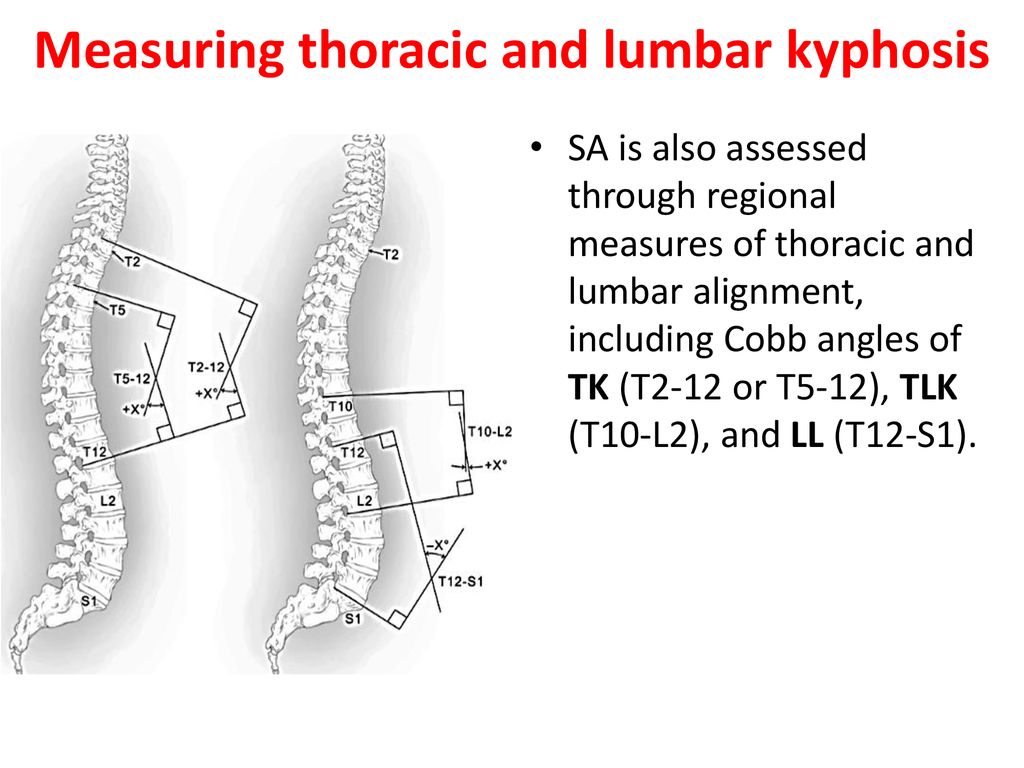
Nervous System Exam:
Next, your doctor will test your nervous system. The nervous system includes the brain, spinal cord, and nerves that extend like tree branches through the body. The nerves carry messages to and from the brain to control your body. The doctor will ask if any part of your body is painful, tingling, numb, or weak. Because nerves make everything work in the body, the doctor will also ask you if you are able to go to the bathroom normally.
Pulmonary function tests.
If the curve is severe, your doctor may order pulmonary function tests. These tests will help determine if breathing is restricted because of diminished chest space.
PREVENTION:-
Development of postural kyphosis can be prevented with maintaining ideal posture, strengthening both abdominal and back muscles, and maintaining ideal body weight.
TREATMENT:-
- MEDICAL:
Pain relievers.
If over-the-counter medicines — such as acetaminophen (Tylenol, others), ibuprofen (Advil, Motrin IB, others), or naproxen sodium (Aleve) — aren’t enough, stronger pain medications are available by prescription.
Osteoporosis medications.
Bone-strengthening medications may help prevent additional spinal fractures that would worsen your kyphosis.
2. SURGICAL:
SPINAL FUSION:

Surgeons perform spinal fusion as part of every spinal reconstructive surgery in people with adult scoliosis or kyphosis.
Spinal fusion stabilizes the spine by permanently joining two vertebrae together, eliminating movement between them. Typically, small pieces of bone taken from other parts of the body, called “grafts,” are placed in between vertebrae to help them fuse together.
In time, new bone grows over the graft. The main job of the screws and rods placed during surgery is to hold the vertebrae solidly together while the bone growth occurs.
Spinal fusion may be performed to join two or more vertebrae together. Severe scoliosis or kyphosis may require the fusion of multiple vertebrae in order to stabilize and straighten the spine.
3. BRACING:
Bracing is only recommended when the hyperkyphosis is no longer reversible through exercises because it is too stiff or because exercises have already proved insufficient.
It’s preferable for a physiotherapist to choose exercise therapy because it’s less invasive and is thus a better first-line option.
Bracing is a very important element in the physical treatment of thoracic hyperkyphosis, but it gives only beneficial outcomes in conjunction with physical therapy.
The combination of both reduces spinal stiffness. Passive bracing without the addition of physical therapy doesn’t have any effect on the thoracic spine.
A few types of bracing for thoracic hyperkyphosis are mentioned below:
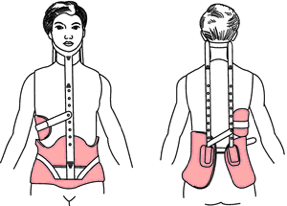
A Milwaukee Brace is the most common brace used by patients with thoracic hyperkyphosis. This brace has posterior pads pushing anteriorly on the kyphosis.
The neck and the pelvis are controlled by the other segments of the brace. The patients should wear this brace 23 hour a day for 1-2 years.

The results of the Lyon Antikyphosis Brace were very satisfactory in most patients with thoracic hyperkyphosis.
Also, a new bracing design called the Kyphologic Brace has been shown to have a good in-brace correction at average.
Another kind of brace using the two 3-point pressure system is the ‘Gschwend type’ brace. This brace is mostly used in Germany.
4. PHYSIOTHERAPY MANAGEMENT:
EXERCISES:
All exercises should perform with breath regulation, stretch inhale, and with relax position exhale.
In a kyphotic patient, there is a tight pectoral muscle and it will lead to a decrease in chest expansion which decreases the breathing capacity of the patient.
so exercise with breathing helps in improving chest expansion and thereby improve breathing capacity.
ARM STRETCH UP
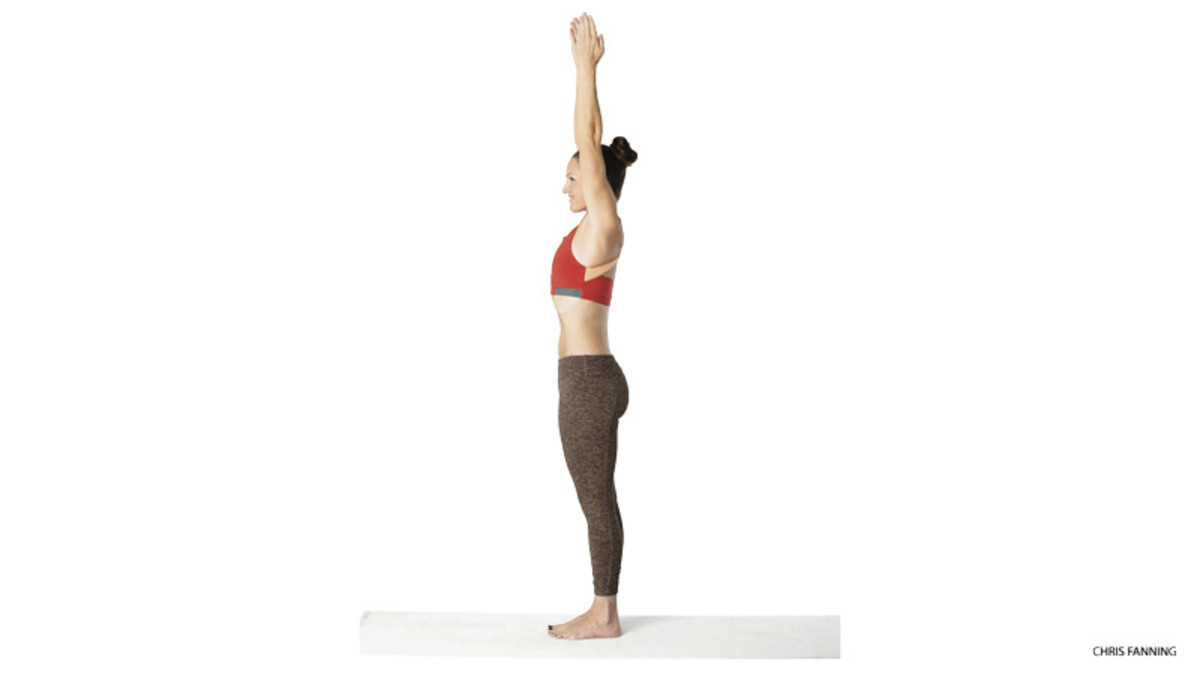
BACK EXTENSION IN STANDING
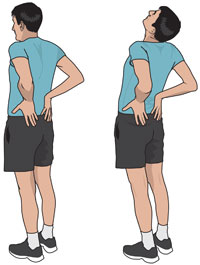
- Begin this exercise by standing up with good posture. Now take both hands and place them on both sides of your lower back.
- Now with the help of your hands push your pelvis forward and extend your spine back. Follow the extension with your neck so that you end up facing the ceiling.
- Start with 10 repetitions and do 2-3 sets.
- This one is particularly great to do when you need a break from sitting at your desk…
PECTORAL STRETCH(BUTTERFLY EXERCISE)
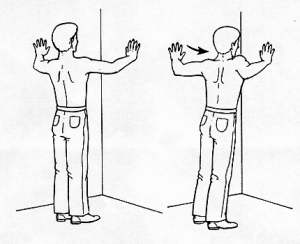
- Place your forearms and palms on either side of the wall at approximately shoulder level.
- Inhale.
- Exhale, and pulling your lower abdominal muscles into your spine, lean toward the wall. You only need to go to the point where it feels challenging but causes no pain or discomfort. It’s more important to move your whole body as a unit, and not bend anywhere along the chain.
- Hold the position for between 5-30 seconds, then come back to start.
BRIDGING
- Lie on your back with both knees about 90 Degree.
- Then push your feet into the floor, squeeze or tighten your buttocks, and lift your hips off the floor until the shoulders, hips, and knees are all in a straight line.
- Hold for about 5 sec, and then slowly lower your hips back down to the floor and rest for up to TEN seconds.
- Repeat 10 times.
FOREARM SUPPORT
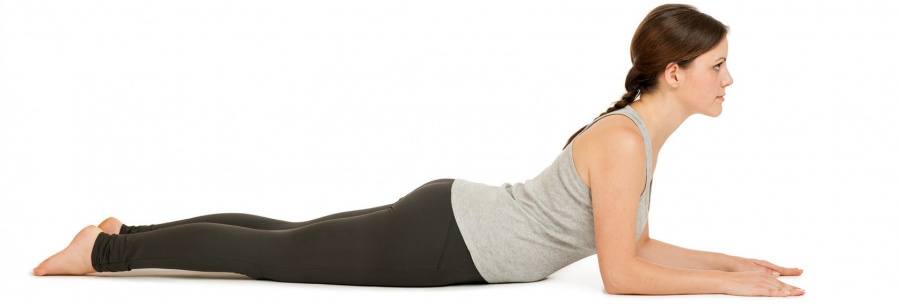
- Begin this exercise by lying on your stomach (prone position) and slowly prop yourself up on your elbows while keeping your hips in contact with the floor.
- Hold the prop-up position for 10-15 seconds before returning to the prone position (lying face down).
- Gradually increase to holding the end position for 30 seconds. Aim for 10 repetitions of this stretch.
HAND SUPPORT

- Once you’ve mastered the half cobra pose, you can increase the difficulty by moving to the advanced version of this stretch.
- Begin this exercise by lying on your stomach in the prone position (lying facing down) and slowly press up on your hands while keeping your pelvis in contact with the floor and lower back relaxed.
- Hold the prop-up position for 10 seconds. Aim for 10 repetitions of this stretch.
- Eventually try to hold this pose for longer if it feels good (20-30 seconds).
BIRD DOG

- Begin on your hands and knees with your hands positioned under your shoulders and knees positioned under your hips.
- Raise your left arm and reach it forwards until it is aligned with your torso; at the same time, kick your right leg backwards until is it aligned with your torso.
- Hold this position for 2-3 seconds before slowly returning to the starting position.
- Repeat with your right arm and left leg.
- Alternate sides for 10 repetitions and do 2-3 sets.
SUPERMAN POSE

- Lay face down on a mat or flat surface, with arms outstretched.
- Keep your hands and arms straight throughout the exercise.
- Raise your hand and legs 4-5 inches off the ground.
- Hold for 5 seconds, then return to starting position.
ADVISES:-
- Always sits with straight back and avoid stoop posture.
- whenever you sit for computer work avoid forward head,keep your chin tuck in.
- squeeze your shoulder blades backwards and downwards to prevent rounded shoulders.
- when prolonged sitting is required,in between work do some neck movements and shoulder stretches.
- Avoid long time forward bending of neck.
- keep your computer at eye level which keep your head in neutral position.

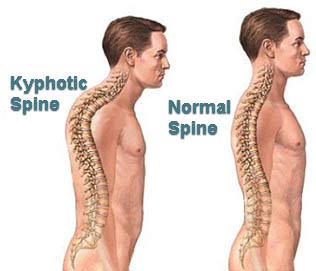
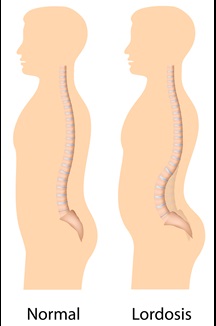
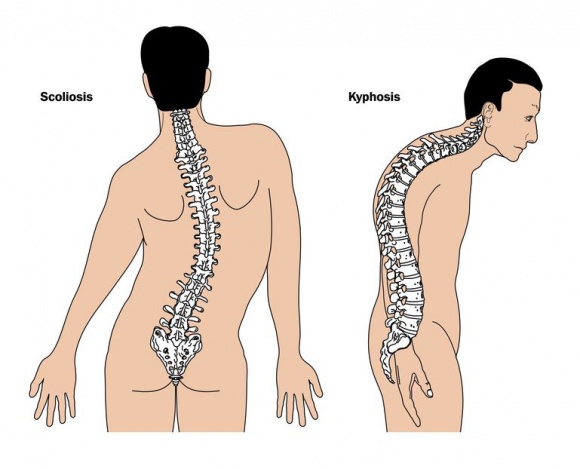
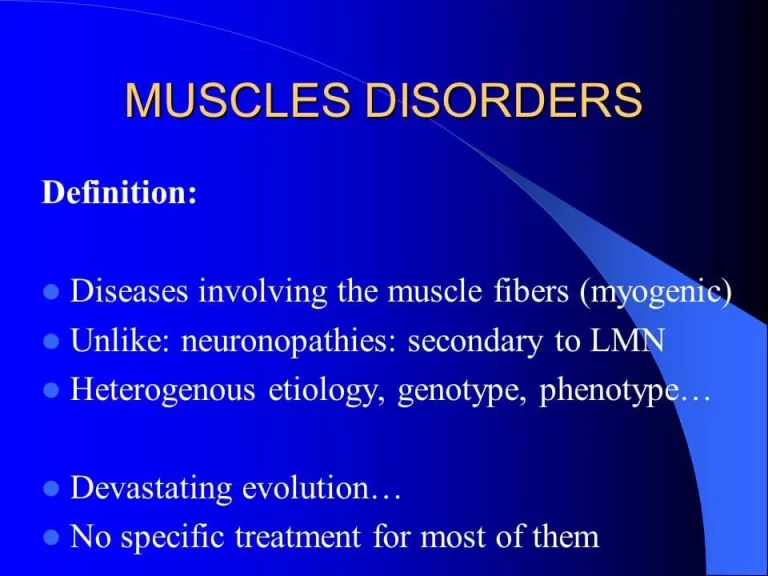
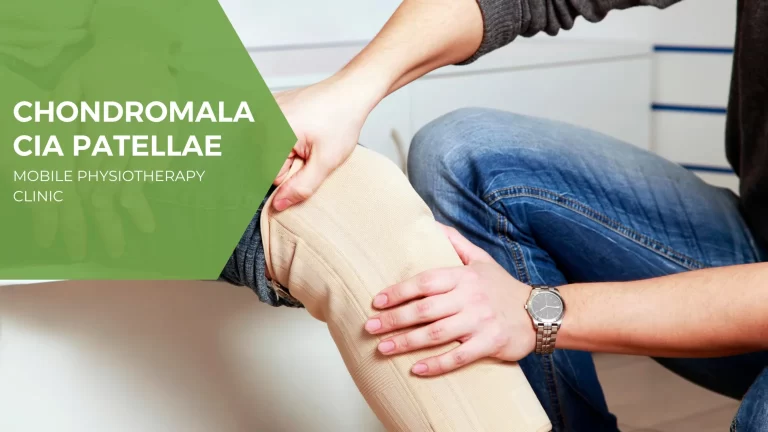
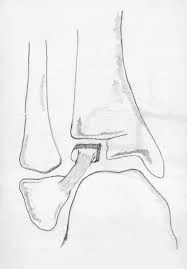
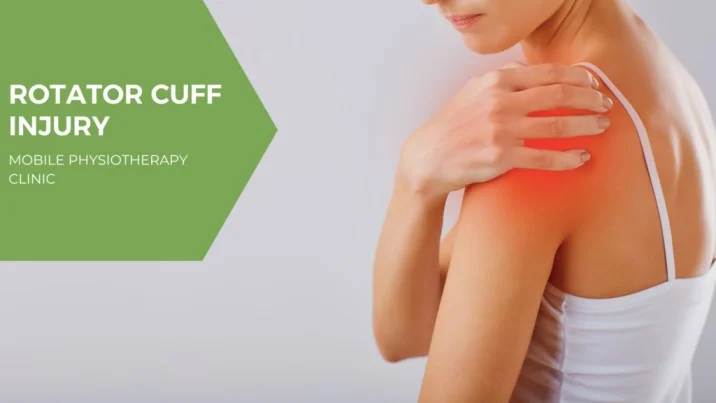
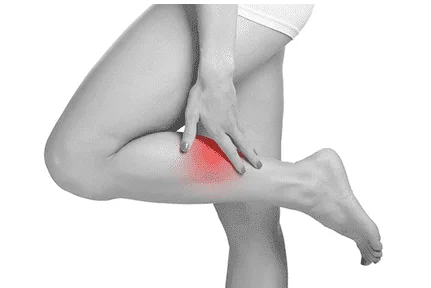
Exercise Description are very helpful, good article.
My ex-husband has a hunched back as well as a sunken chest. His brother was autistic. Could these things be related?